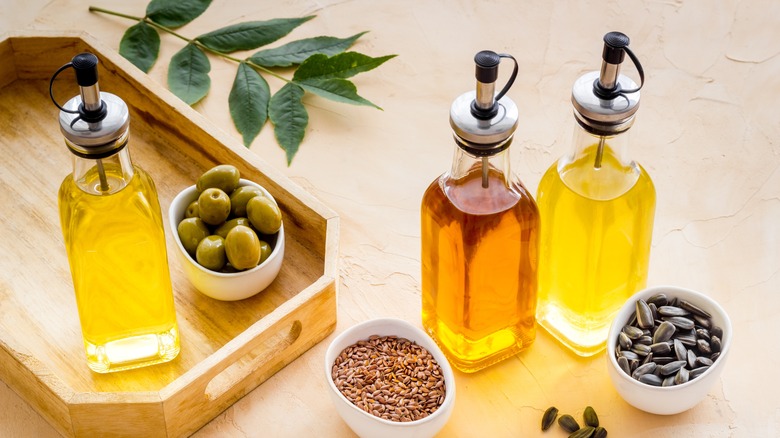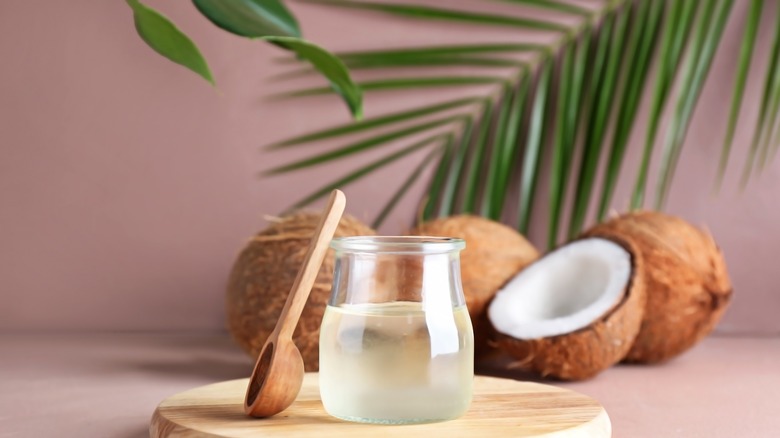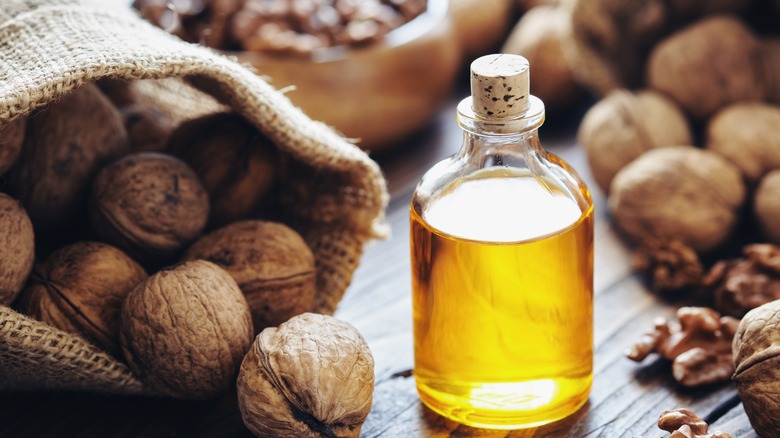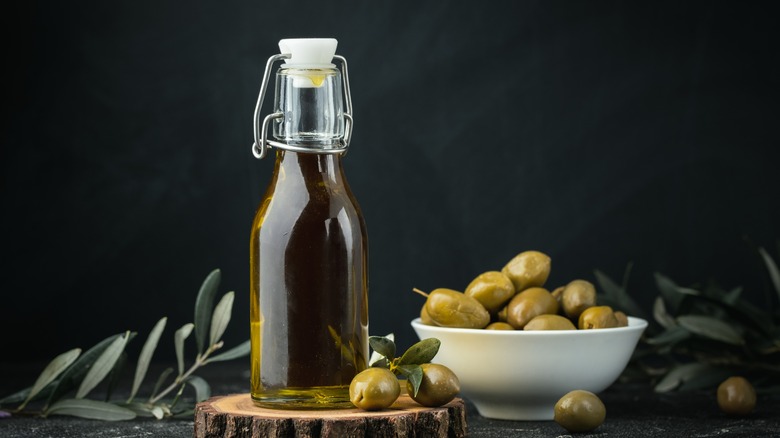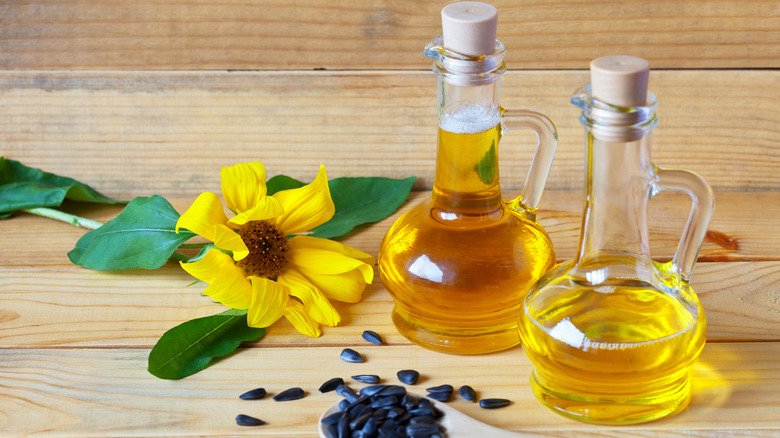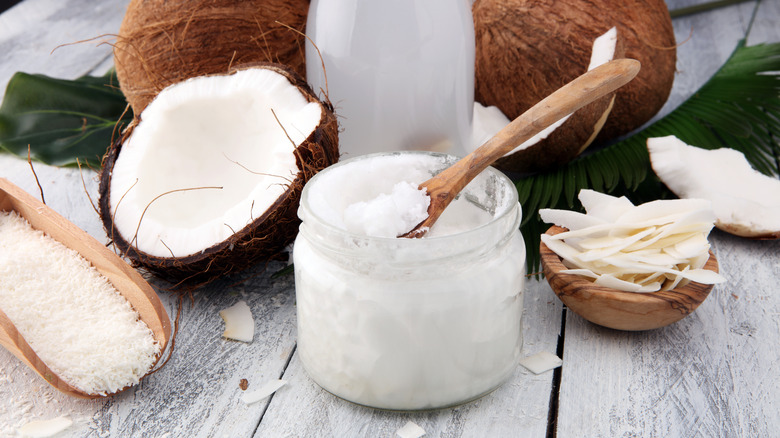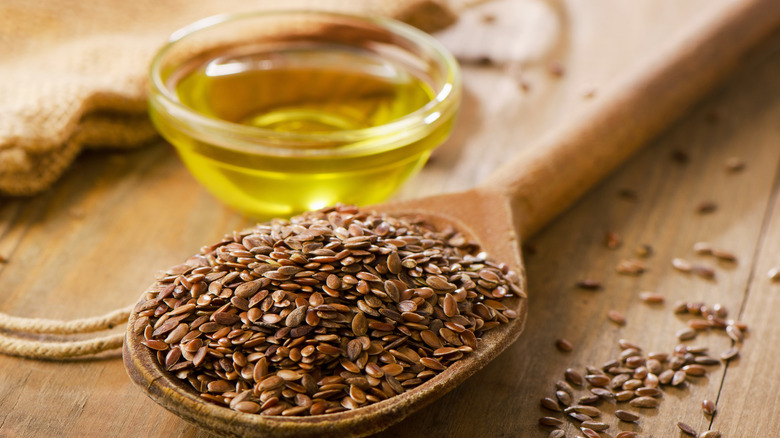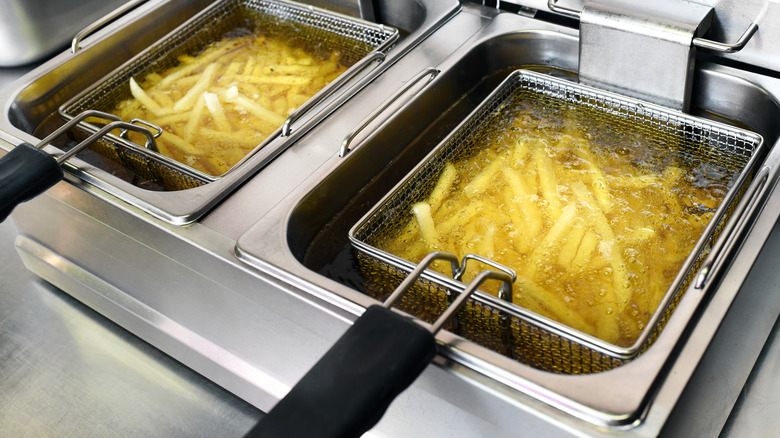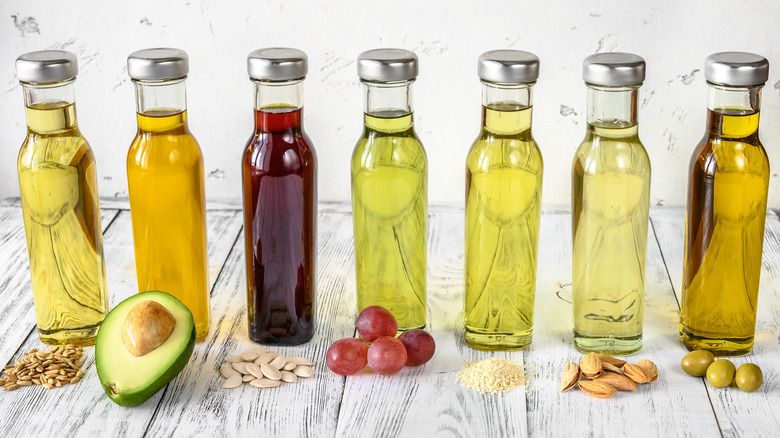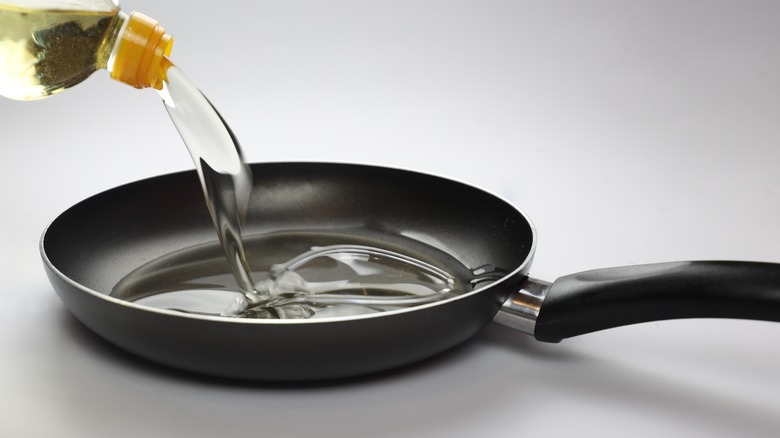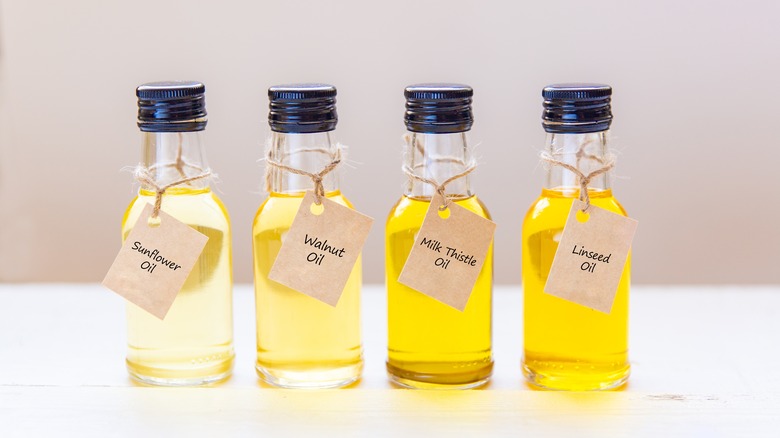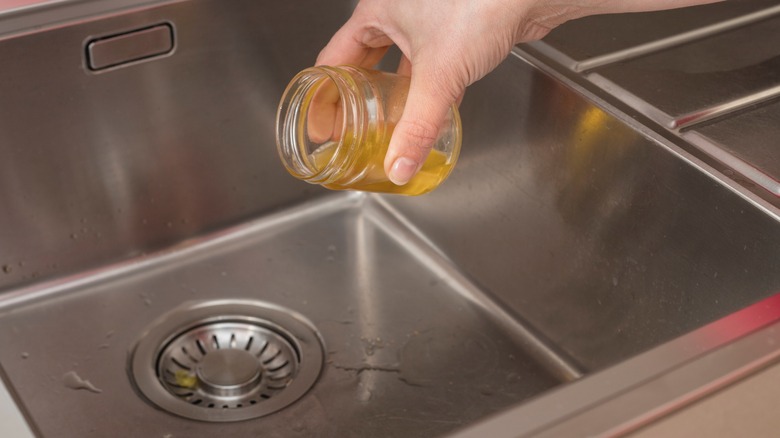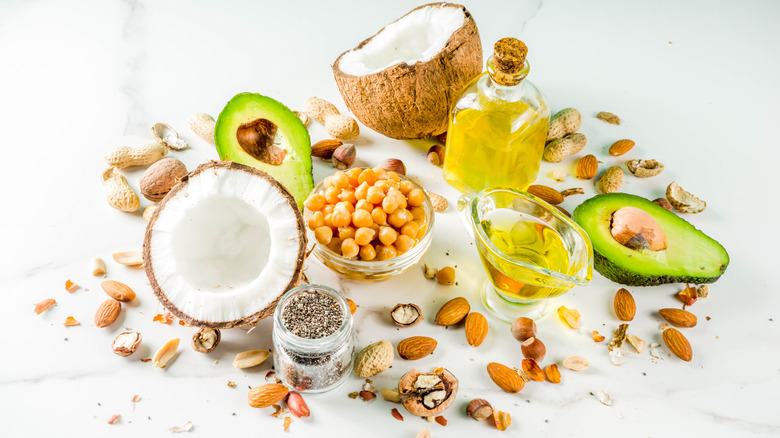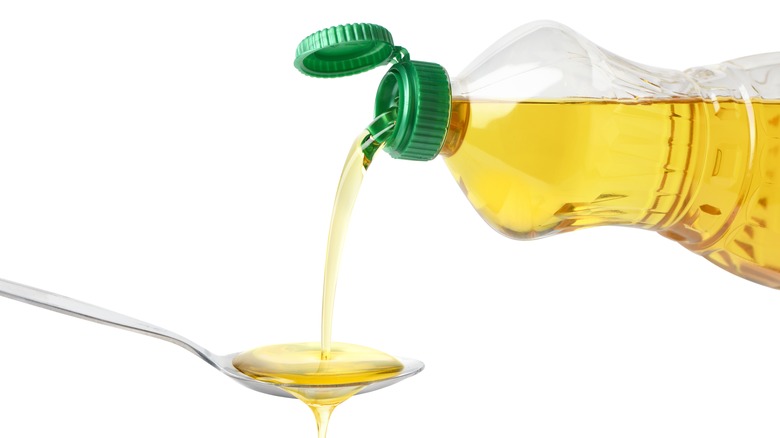Mistakes Everyone Makes When Cooking With Oil
Cooking oils are an essential kitchen item, at our side through virtually every dish we make. From sautéeing and roasting to baking or drizzling over salads, most of us would feel lost without a bottle of oil in the kitchen cupboard. Even experienced home cooks, however, can make mistakes when cooking with oil, which can lead to sub-par dishes at best or even dangerous compounds being produced during cooking.
Olive oil is the go-to option for many people, but there is a wide range of oils available to enhance your culinary creations, from flaxseed oil to avocado oil, and sticking with the same one every time means you are missing out on the range of flavors they provide. Knowing how to store and cook with these oils is crucial to ensure you get the best out of them in terms of both flavor and nutrition.
Let's explore the common mistakes people make when cooking with oil, from heating them beyond their smoke points to overpowering delicate ingredients. Armed with these insights, you can expand your oil collection and take your meals to delicious new heights.
Using the wrong oil at high heat
While it is great to have a selection of oils to cook with in your pantry, some are more suited for high-heat cooking than others. If you've ever been shocked to see the frying pan start to smoke as you heat the oil for your stir fry, it might help to learn about the smoke points of different oils.
The smoke point of an oil is the temperature at which it begins to break down, creating not only black smoke in your kitchen, but also dangerous compounds that can be absorbed by your food. By using an oil with an appropriate smoke point, your food will taste better and you can look after your health at the same time.
Most of us reach for olive oil for our cooking needs, but there are options with higher smoke points, especially if your olive oil is extra virgin. Refined versions of avocado, coconut, and sunflower oil all have high smoke points of over 400 degrees Fahrenheit, meaning you can happily use them to fry or roast. Canola oil is also very stable at these temperatures.
With a smoke point of around 325 degrees Fahrenheit, extra virgin olive oil can be used at low temperatures without much issue. However, given the elevated price of this prized oil, you may want to save it for drizzling on salads and stick to one of the options above instead.
Not considering the flavor impact of coconut oil
Coconut oil, and coconuts in general, have become a health sensation in the last decade or so, as more becomes known about the benefits of the fats they contain. Many of us, as a result, are using coconut oil as our regular cooking oil, as its high smoke point means you can fry with it without it causing harmful compounds to be formed.
However, it is important to recognize that virgin coconut oil has a stronger flavor than most other oils, and this may impact the taste of the food you cook in it. Coconut oil comes from the meat of the coconut and has a mild coconut flavor. This means it pairs brilliantly with tropical ingredients such as banana and pineapple and works really well in baked goods. And while the flavors used in Thai or Malaysian cuisine may be complemented by the coconut flavor, adding it to a classic French sauce or an Italian pasta dish is unlikely to work.
If you really want to use coconut oil in all of your cooking, consider refined coconut oil instead of virgin. It has a mild flavor and can be used as a blank canvas for whatever you choose to cook in it.
Not storing nut-based oil properly
If you are planning to expand your cooking oil collection, you may have visions of displaying them beautifully on your countertop or a dedicated shelf in your kitchen cupboard. Your oils may have other plans, however, since many of them simply cannot cope with regular cupboard storage.
Nut and seed-based oils, in particular, can oxidize quickly when left at room temperature, meaning they should be stored in the fridge once opened. Oils rich in omega-3, such as walnut and flaxseed, though extremely healthy, are particularly vulnerable and can go rancid very quickly. Not only will this impair the flavor of the oil, but it can cause health issues, including inflammation.
While olive oil and coconut oil can handle being kept in a cool cupboard, the more sensitive oils in your collection are better kept as cold as possible to keep them stable. This will help protect their delicate flavor and keep the omega-3 fatty acids intact, allowing you to have a heart-healthy drizzle on your next salad.
Thinking cloudy oil has gone bad
Reaching for your bottle of olive oil in winter to discover it has turned a cloudy white color can be unsettling, and may have you considering whether it has gone bad. Before you throw it in the trash, you can rest assured that your oil is perfectly useable, and can easily be returned to its former glory.
Most plant-based oils will turn cloudy when exposed to low temperatures, such as refrigeration or a cold cupboard in the winter months. This is due to the fat molecules starting to solidify, creating a cloudy effect while suspended in the liquid. The good news is, your oil should return to its beautiful golden color once you heat it to room temperature. If the room is too cold to achieve that, you can still use the oil as it is. As long as you're not camping out in the Arctic, it should still be liquid enough to add to your salads. Of course, if the oil smells strange or appears to be moldy, it's best to throw it in the bin just in case.
Not distinguishing between refined and unrefined oils
When looking at oil labels to decide which one to purchase, you need to pay attention to more than just the type of oil. While we may be used to using the word refined to describe things of higher quality, when it comes to oils, it's a bit more complicated.
In fact, unrefined oils are generally considered to be higher quality ingredients since they are the most natural form. They have not been processed other than to extract them from their fruit or nut, and they will taste better as a result. You can spot unrefined oils by their color — they will be much darker and richer than their refined counterparts. The word virgin can also be used to describe unrefined oil, especially for olive and coconut oil.
Refined oils, on the other hand, have been processed in some way to remove impurities, changing some of the properties in the process. Refined oils tend to have a straw-like color and a much thinner texture. Their smoke point will also increase, making them the best choice for high-heat cooking. As a rule, use unrefined oils for drizzling or marinating and refined oils for cooking.
Using cold ingredients with coconut oil
Coconut oil is a versatile, tasty oil that can be used in all sorts of dishes. From replacing butter in baked goods to stir-frying shrimp, it's got you covered. At room temperature, it is a very soft solid, melting easily from the heat of your hands. With a melting point of 78 degrees Fahrenheit, it could even melt in your cupboard on a hot day.
Many recipes call for you to melt the coconut oil beforehand, then add other ingredients into the mix. If this is the case, make sure they are at room temperature before mixing with the oil. If you add cold ingredients straight from the fridge, the coconut oil could turn back into a solid, causing unattractive clumps that could mess up the consistency of your dish. A little forward planning can make a big difference here, allowing your warmed-up ingredients to incorporate smoothly into your melted coconut oil.
Heating flaxseed oil
Flaxseed oil is an underused oil that has a deliciously nutty flavor and plenty of health benefits. Also known as linseeds, flaxseeds are packed with omega-3 fatty acids, which have been shown to improve heart health and even protect against cancer. If you follow a plant-based diet, getting your omega-3 intake from plants is crucial, and flaxseeds are one of the richest sources.
Cooking with flaxseed oil, however, is not a good idea, especially at high temperatures. Flaxseed oil has a fairly low smoke point, and the super-healthy fats can be destroyed at high temperatures and even form compounds that are damaging to your health.
Instead, use your flaxseed oil for what it does best — lending its beautiful golden color to salads and dressings and adding a nutty flavor to finished dishes. You can also add it to smoothies to give them an omega-3 boost without altering the flavor too much.
Reusing vegetable oil multiple times
When using vegetable oils for frying, particularly deep frying, it is common practice to save the oil afterwards and store it for using again in the future. Considering how much oil can be needed to fill a fryer, it makes sense to save money and prevent food waste by using the oil a few times.
Recent studies, however, suggest that this money-saving hack could be damaging to your health. According to the American Society for Biochemistry and Molecular Biology, a study done on rats showed that animals that were fed reused oils were at higher risk of neurodegeneration, as were their offspring.
Though none of us were under the impression that deep-fried foods belonged in a health plan, this study suggests that common home practices could be further impacting the negative effects of frying food in oil. If you must reuse your oils, try to do it only once and then discard them to reduce the number of harmful compounds being formed.
Not trying lesser-known oils
It is easy as a home cook to get stuck in a rut, using the same ingredients over and over, and cooking oils is one area where this definitely rings true. Many of us rely on olive oil and canola oil for the majority of our cooking needs, without considering what other options might be available.
Adding a variety of oils to your cooking arsenal can bring unique flavors to your dishes, as well as various health benefits. Oils such as pumpkin seed, walnut, and hazelnut oil are all great ways to increase your omega-3 intake while adding delicious flavors to your salads. Avocado oil is a great source of vitamin E and has a very high smoke point, making it ideal for high-heat cooking that other oils can't handle.
For Asian-inspired dishes, sesame oil can complement the flavors and is a great addition to marinades. Branching out beyond your usual oils can bring a new depth of flavor to your dishes and increase their nutritional profile at the same time.
Using too much or too little oil
The fat content of oil means that it can be tricky to get the balance between too much and too little oil, especially if you are trying to keep calories under control. Although the fats in many cooking oils are healthy ones, the calorific impact of them is significant, so you may want to use them sparingly. However, not using enough oil can impact how it cooks, so getting the balance right is crucial.
When frying with oil, use enough oil to coat the surface of the pan without having a pool of fat in the center of it. You can always use a pastry brush to apply a thin layer of oil without any excess fat. For roasting, you can toss your ingredients in a small amount of oil before adding to the baking dish rather than drizzling it liberally over them in the pan. If you have accidentally added too much oil and your food seems greasy, drain it on kitchen paper after cooking, to absorb some of the fat and prevent it from making its way to your plate.
Not paying attention to the color of the oil
When choosing an oil at the grocery store, figuring out which one best suits your needs can be a confusing prospect. Rather than trawling through every label, there is a physical property of the oils that can give you a visual clue at a glance.
The color of cooking oils is a good indication of how refined it is. If you are looking for an oil for salad dressing and drizzling over dishes after cooking, you should be looking for an oil that has a dark, rich color. This suggests it is unrefined, meaning all of the nutrients that are naturally found in the fruit will still be present in the oil. These oils usually have a high viscosity as well, meaning their thick texture makes a great dressing or marinade.
Oils that have a pale straw-like color tend to be refined oils, which have a lower nutrient content. They are thinner and have higher smoke points, making them a good option for frying and roasting. Next time you are in a hurry at the grocery store, you can use the color of the oils to help you make a quick choice and select the best oil for your needs.
Putting used cooking oil down the sink
Once you have created your culinary masterpiece and it's time to clean up the kitchen, you will come across a less-than-enjoyable task — how to deal with the leftover oil. This greasy task is not fun, but having a plan for your used oil is crucial to saving yourself from a plumbing disaster.
It may be tempting to pour leftover oil down the sink, but this is never a viable option, even for small amounts. Oil can solidify as it cools, which will cause your drains to clog and can even cause problems in city sewers. Unclogging your pipes can be an expensive task, so you need to find a different way to get rid of the oil.
Once the oil has cooled, transfer it to a disposable container, such as a used plastic bottle, seal it, and throw it in the garbage. For very large amounts of oil, you may want to investigate if there is a local oil recycling program to allow it to be reused.
Not appreciating the health benefits of different types of oil
Most people are aware of the health benefits of extra virgin olive oil, and in recent years, the nutritional profile of coconut oil has hit the headlines. Understanding what health benefits each oil offers is crucial to allow you to add an array of nutrients to your dishes.
Olive oil and avocado oil both contain monounsaturated fats, which are considered some of the healthiest fats you can eat. The difference in smoke points means that they make the perfect pair — extra virgin olive oil for drizzling and avocado oil for cooking.
Unrefined oils made from nuts and seeds are rich in heart-healthy omega-3 fats. Pumpkin seed, sesame seed, and walnut oil offer a variety of unique flavors, meaning you can find the perfect oil to complement each dish. Coconut oil is rich in a special type of saturated fat called medium-chain triglycerides (MCTs.) These fats behave differently from regular saturated fats from animal products and are thought to have anti-inflammatory and anti-fungal properties.
Using a wide range of oils in your cooking is a great way to make your dishes more interesting, matching up certain oils with different flavors. By understanding the health benefits of each oil you can create a balanced nutritional profile for each dish, too.
Using canola oil when you want robust flavor
Canola oil is a great all-rounder that can be used for cooking a variety of different ingredients. It has a high smoke point, meaning it can be used for frying and roasting without issue.
However, if you are looking for an oil with a deep flavor to enhance your dishes, canola oil should not be your first choice. Its mild, neutral flavor is what makes it so versatile, but it means the flavor it contributes to a dish is minimal. For flavorsome dressings and marinades, sesame oil, walnut oil, or olive oil will be much better options.
Canola oil excels instead when you need a light oil that won't overpower your other ingredients and will let their flavors shine. It is an ideal option for baking, as a substitute for butter, if you want to cut down on saturated fat. These culinary options allow you to make the most of canola oil's properties and use alternatives when flavor is your main requirement.
Not adding oil to non-stick pans
Non-stick pans are one of the game-changing elements in modern cooking, allowing us to cook a huge variety of meals with much less mess. However, although they are designed to reduce the amount of oil needed for cooking, eliminating it altogether is not advisable.
The coating that makes these pans non-stick can start to break down at very high temperatures, and regularly cooking without any oil can make this happen faster. Adding a small amount of oil to your non-stick pans when cooking will increase their longevity and help them be as effective as possible. Filling a small spray bottle with cooking oil is a great way to use a fine mist of oil instead of the usual glug while avoiding the additives in other cooking sprays. By looking after your pans in this way, you can keep them non-stick and effective for as long as possible.

